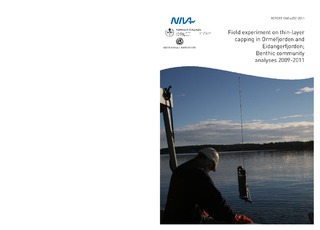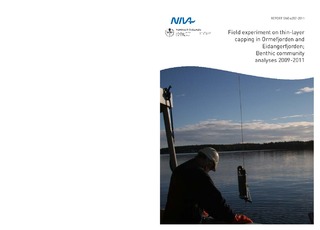| dc.contributor.author | Schaanning, Morten | nb_NO |
| dc.contributor.author | Beylich, Bjørnar | nb_NO |
| dc.contributor.author | Samuelsson, Göran | nb_NO |
| dc.contributor.author | Raymond, Caroline | nb_NO |
| dc.contributor.author | Gunnarsson, Jonas | nb_NO |
| dc.contributor.author | Agrenius, Stefan | nb_NO |
| dc.contributor.other | Schaanning, M. - Project manager | nb_NO |
| dc.coverage.spatial | Telemark | nb_NO |
| dc.date.accessioned | 2014-08-01T10:56:50Z | |
| dc.date.available | 2014-08-01T10:56:50Z | |
| dc.date.issued | 2011 | nb_NO |
| dc.identifier | 6257 | nb_NO |
| dc.identifier.isbn | 978-82-577-5992-6 | nb_NO |
| dc.identifier.issn | 1894-7948 | nb_NO |
| dc.identifier.uri | http://hdl.handle.net/11250/215691 | |
| dc.description.abstract | As part of the work towards a remediation plan for the Grenlandfjord area, thin cap test fields were established at 30 and 100 m depth in the outer Grenlandfjord in September 2009. One field was treated with crushed limestone, one field was treated with clay dredged from a nearby location and two fields were treated with a mixture of dredged clay and activated carbon (AC). The test fields and appropriate reference locations were surveyed with a sediment profile camera (SPI) every spring and autumn from May 2009 to May 2011. The benthic habitat quality index (BHQ) determined from picture analyses showed good conditions at all fields before cap placement and a change to less good at both fields treated with AC by the end of the investigation period. Full macrofaunal analyses were performed in October 2009 and November 2011 and characterized in accordance with standard community analyses and multivariate statistical methods (PERMANOVA). The analyses showed that both fields treated with AC were significantly depleted compared to the respective reference fields, and that they experienced a negative trend from 2009 to 2010. Neither the coarse limestone material (up to gravel size) nor the dredged clay without AC added had significant effects on number of species, biomass or the BQI index. Continued monitoring is recommended for fields treated with limestone and activated carbon. | nb_NO |
| dc.description.sponsorship | Norwegian and Swedish Research Councils, Norwegian Climate and Pollution Directorate, Norsk Hydro and others | nb_NO |
| dc.publisher | Norsk institutt for vannforskning | nb_NO |
| dc.relation.ispartofseries | NIVA-rapport;6257 | nb_NO |
| dc.rights | Navngivelse-IkkeKommersiell-DelPåSammeVilkår 3.0 Norge | nb_NO |
| dc.rights.uri | http://creativecommons.org/licenses/by-nc-sa/3.0/no/ | nb_NO |
| dc.subject | sediment remediation | nb_NO |
| dc.title | Field experiment on thin-layer capping in Ormefjorden and Eidangerfjorden; Benthic community analyses 2009-2011 | nb_NO |
| dc.type | Research report | nb_NO |
| dc.rights.holder | Norsk institutt for vannforskning/Norwegian institute for water research | nb_NO |
| dc.subject.nsi | VDP::Matematikk og naturvitenskap: 400 | nb_NO |
| dc.source.pagenumber | 57 | nb_NO |
| dc.subject.keyword | tiltak | nb_NO |
| dc.subject.keyword | dioksiner | nb_NO |
| dc.subject.keyword | bunnfauna | nb_NO |
| dc.subject.keyword | felteksperiment | nb_NO |
| dc.subject.keyword | remediation | nb_NO |
| dc.subject.keyword | dioxins | nb_NO |
| dc.subject.keyword | benthic macrofauna | nb_NO |
| dc.subject.keyword | field experiment | nb_NO |
| dc.relation.project | 27387 | nb_NO |


